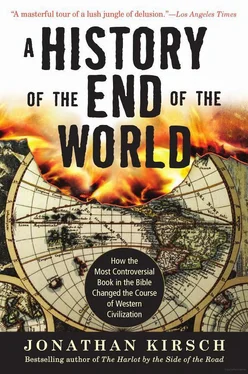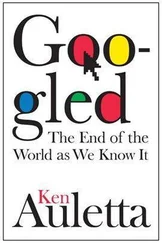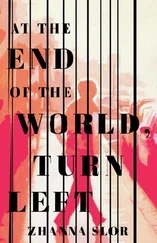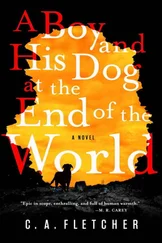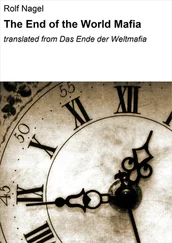The great day turned out to be the Great Disappointment, as historians have dubbed it. “Our fondest hopes and expectations were blasted, and such a spirit of weeping came over us as I never experienced before,” recalled a farmer named Hiram Edson, one of the disappointed Millerites. “We wept, and wept, till the day dawn.” 44And their skeptical friends and neighbors did nothing to console them in their grief: “What! Not gone up yet? We thought you’d gone up! Aren’t you going up soon?” one scoffer was heard to say. “Wife didn’t leave you behind to burn, did she?” 45
A few Millerites were so distraught that they went mad or took their own lives, or so it was reported. Others repented of their hasty decisions during the last days and filed lawsuits to reclaim the property that they had so rashly given away. And some only blamed themselves: God’s secret plan for the end of the world is surely concealed within the scriptures, they continued to believe, and they had merely failed to find it.
“I still believe that the day of the Lord is near, even at the door,” insisted Father Miller himself, who entertained the reassuring notion that the spectacular public failure of his own prophecy had been God’s way of sending lukewarm Christians back to their Bibles in search of divine truth. As an authentic American visionary, Father Miller looked on the sunny side even when contemplating the end of the world. 46
Among the undiscouraged Millerites was a young woman named Ellen White ( née Harmon) (1827–1915). During the year of the Great Disappointment, at the age of seventeen, White experienced the first of a series of divine visions that eventually numbered some two thousand in all. She was convinced that Miller had been right about the year but wrong about what would actually happen. Jesus Christ, she believed, chose 1844 as the year to fulfill a prophecy in Revelation that she interpreted as an act of preparation for the Second Coming and the Day of Judgment: “And the temple of God was opened in heaven, and there was seen in his temple the ark of his testament: and there were lightnings, and voices, and thunderings, and an earthquake, and great hail.” 47
As she continued to read and reinterpret the book of Revelation, with its obsessive references to the number seven, Ellen White came to believe that God was calling upon Christians to observe the Jewish Sabbath as the holiest day of the week. She insisted that anyone who hoped to be numbered among the saints on judgment day must prepare for salvation by renouncing coffee, tea, alcohol, and tobacco, abstaining from masturbation, and embracing sexual purity and vegetarianism. (White herself “battled heroically against her own addiction to Southern fried chicken.”) 48By 1863, Ellen White and her husband, a preacher named James White, founded a church of their own, the Seventh-day Adventists. Their “text of choice” was the book of Revelation. 49
The Seventh-day Adventists were only the largest and most successful of the apocalyptic churches that proliferated and prospered in the wake of the Great Disappointment. The United Society of Believers in Christ’s Second Appearing, better known as the Shakers, for example, and the Zion Watch Tower Tract Society, later renamed the Jehovah’s Witnesses, also harkened to “the state of emergency announced in the final words in the Book of Revelation: ‘And behold, I come quickly.’” 50And yet, mindful of the fate that had befallen the Millerites, they were always forced to confront the plain fact that the world still failed to “end on time.”
Thus, for example, the early followers of Joseph Smith, founder of the Church of Jesus Christ of Latter-day Saints (and, perhaps not coincidentally, a childhood resident of the Burned-Over District), resolved to build a kingdom of saints with their own hands on the American frontier. Indeed, the Mormons were fearless and tireless pioneers who pulled their own handcarts across the vast stretches of the desert wilderness to reach the New Zion in Utah. Yet they were also convinced that various ills and afflictions of the world around them were sure signs of “that great day fast approaching when this scene of wickedness shall close,” according to a Mormon newspaper called The Evening and Morning Star. 51
“When they learned to tolerate that tension—knowing the end was near, but not knowing how near—they came a lot closer to the sensibility of the earliest Christians,” observes historian Richard Wrightman Fox in Jesus in America. 52
Far more ominous examples of the apocalyptic impulse can also be discerned in the tumultuous years leading up to the Civil War. An African-American slave named Nat Turner (1800–1831), a lay Baptist preacher with a strong visionary bent, came to believe that he had been called to bring down God’s wrath on the slave owners of the American South. He regarded a solar eclipse in 1831 as a sign from on high, and he was inspired to lead a band of fifty armed slaves in what turned out to be the single bloodiest slave insurrection in American history. Not unlike apocalyptic revolutionaries in other times and places, Turner was hunted down and not merely executed but obliterated: his corpse was skinned, and his remains were boiled down into grease.
Still, it is significant that the Great Awakenings were followed by the Great Disappointment. Americans clearly seemed to prefer the pursuit of life, liberty, and happiness in the here and now to the contemplation of the horrors and terrors of doomsday. Even Christian believers saw the perfection of American democracy through social and political reform as a more worthy enterprise than watching out for signs of the end. “[M]ainstream Protestants still believed that the world would have an end,” explains American church historian James H. Moorhead, “but they would not admit that it should arrive with unseemly haste.” 53
Only on the ragged edges of Christian true belief in America was Revelation still being read as a book of “future history.” By now, however, the apocalyptic idea—and the provocative rhetoric of Revelation—were deeply woven into the fabric of American culture. Inevitably, the old impulses of thought and language reasserted themselves when the very existence of the United States was placed at risk in the conflagration that we call the Civil War, which was not only a clash of arms but a social revolution and a Kulturkampf, too.
Americans had always looked to the future with bully optimism and stout self-confidence. Even the otherwise dour and censorious Puritans, as we have seen, were capable of visualizing the New Jerusalem as a bustling American metropolis. But the coming of the Civil War, with its industrial-scale carnage and the threat it posed to the very existence of American democracy, reminded even the most cheerful Americans of the dire events that are predicted in the book of Revelation. And so Revelation served yet again as a “language arsenal” for combatants on both sides of the struggle.
Julia Ward Howe, for example, pointedly invokes the iconography of Revelation in “The Battle Hymn of the Republic” when she glorifies “the fateful lightning of His terrible swift sword” and conjures up “the vintage where the grapes of wrath are stored,” an oblique allusion to the passage in Revelation where “the angel thrust in his sickle into the earth, and gathered the vine of the earth, and cast it into the great winepress of the wrath of God.” 54A less celebrated line of the same famous song offers an even more literal reference to the passage in Revelation that describes the final battle between the Lamb of God and the Devil in the guise of a red dragon: “Let the Hero, born of woman, crush the serpent with His heel.” 55
Indeed, the book of Revelation provided a template for sermonizers and propagandists in both the Union and the Confederacy who sought to rally the troops and strengthen the resolve of the civilians back home. “The Lord is mustering the nations to the last great struggle between freedom and slavery, truth and error,” insisted one preacher whose text was reproduced and circulated to Union soldiers in an anthology of speeches and sermons titled Christ in the Army. “We are entering, fellow-citizens, upon a period foretold by prophets of old—looked for and longed for by lovers of their country in past generations—which kings and prophets waited to see, and have not seen—a period of the overthrow of despotism, and the downfall of Anti-Christ.” 56
Читать дальше
